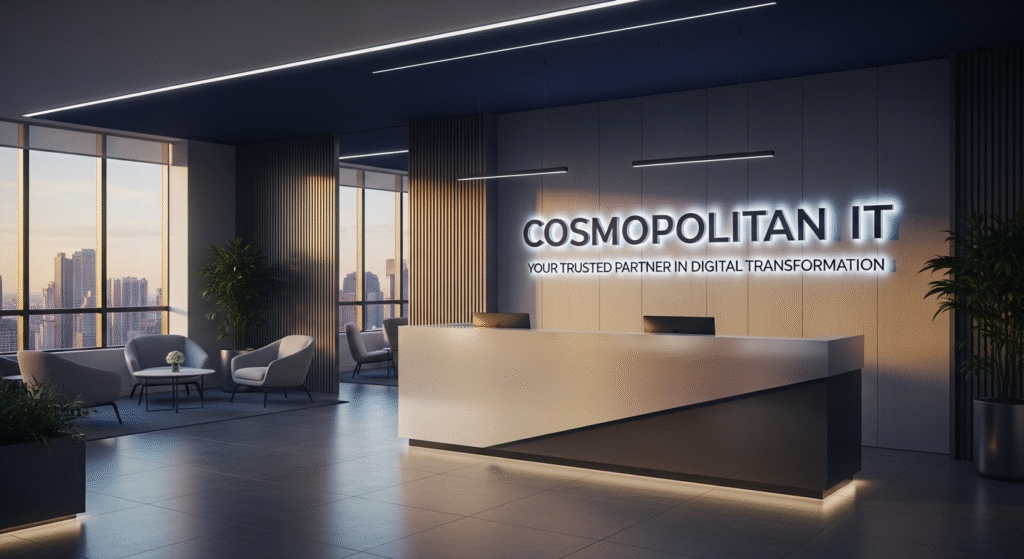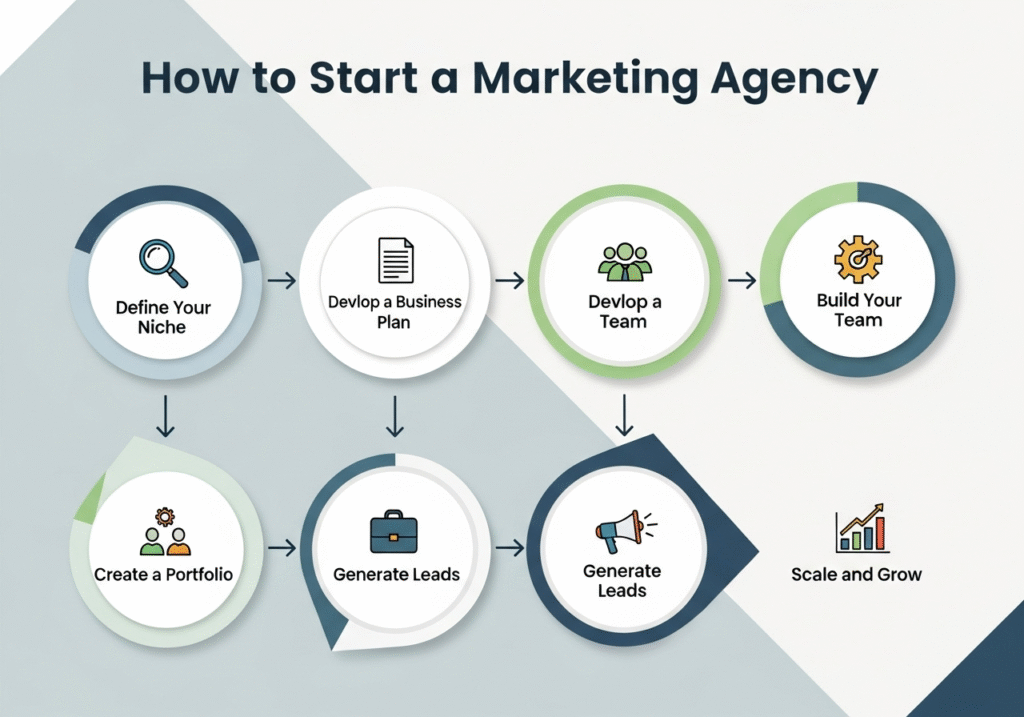Your website’s search rankings depend heavily on what happens outside your own pages. Off-page SEO has evolved far beyond basic link building, and mastering these cutting-edge off-page SEO insights can dramatically boost your website authority and search visibility.
This guide is designed for digital marketers, business owners, and SEO professionals who want to move beyond outdated tactics and implement advanced SEO techniques that actually work in today’s competitive landscape.
We’ll dive deep into modern link building insights that search engines actively reward, showing you how to earn high-quality backlinks that boost your rankings. You’ll discover how social media signals and brand mentions create powerful trust signals that amplify your site’s credibility. Plus, we’ll cover the technical side of off-page optimization and share proven methods for measuring your SEO success.
Ready to transform your off-page SEO strategy? Let’s explore the tactics that separate top-ranking websites from the competition.
Advanced Link Building Strategies That Search Engines Reward

Strategic Guest Posting on High-Authority Industry Publications
Guest posting remains one of the most effective off-page SEO strategies when executed with precision and strategic intent. The key lies in targeting publications that already command respect within your industry rather than casting a wide net across generic platforms.
Start by identifying industry publications that your target audience actively reads and trusts. These platforms typically have domain authorities above 60 and maintain strict editorial standards. Research their content themes, writing style, and submission guidelines thoroughly before crafting your pitch.
Your guest post topics should address genuine pain points within your industry while subtly showcasing your expertise. Avoid promotional content – focus on delivering actionable insights that readers can implement immediately. This approach naturally positions you as an authority while earning high-quality backlinks.
When crafting your author bio, include a contextually relevant link back to your website’s most valuable resource page rather than your homepage. This advanced SEO technique drives more qualified traffic and sends stronger authority signals to search engines.
Building Relationships with Influential Content Creators
SEO outreach insights reveal that successful link building depends heavily on genuine relationship building rather than transactional exchanges. Content creators, bloggers, and industry influencers receive countless pitches daily – yours needs to stand out through authentic connection.
Begin by engaging meaningfully with their content across multiple platforms. Share their posts with thoughtful commentary, participate in their webinars, and reference their work in your own content (with proper attribution). This groundwork creates familiarity before you ever send a collaboration request.
When reaching out, personalize every message by referencing specific content they’ve published or achievements they’ve earned. Offer value upfront – perhaps industry insights, exclusive data, or introductions to other valuable connections in your network.
Consider these relationship-building tactics:
- Collaborative content creation: Propose co-authored pieces or expert roundups
- Resource sharing: Offer access to proprietary research or tools
- Event partnerships: Joint webinars or podcast appearances
- Social amplification: Consistently promote their content to your audience
Creating Link-Worthy Digital Assets and Resources
The most sustainable link building insights center around developing content so valuable that other websites naturally want to reference and link to it. These digital assets serve as link magnets that continue attracting backlinks long after publication.
Research gaps in your industry’s available resources and create comprehensive guides, tools, or datasets that fill those voids. Original research studies, industry surveys, and data visualizations consistently earn high-quality backlinks from journalists, bloggers, and industry publications.
Interactive tools and calculators provide immense value while encouraging natural link acquisition. Consider developing:
| Asset Type | Examples | Link Potential |
|---|---|---|
| Interactive Tools | ROI calculators, assessment quizzes | High |
| Original Research | Industry surveys, market analysis | Very High |
| Visual Resources | Infographics, templates, charts | Medium-High |
| Comprehensive Guides | Ultimate guides, resource lists | High |
Promote these assets strategically through industry publications, social media, and direct outreach to relevant websites that might find them valuable for their audiences.
Leveraging Broken Link Building for Quick Authority Gains
Broken link building represents one of the most website authority SEO techniques that provides mutual benefit – you help websites fix problematic user experiences while earning quality backlinks.
Use tools like Check My Links or Ahrefs to identify broken links on high-authority websites within your industry. Focus on resource pages, industry directories, and comprehensive guides where your content could serve as a suitable replacement.
Your outreach approach should emphasize helping the website owner rather than requesting a favor. Point out the broken link, explain how it affects user experience, and offer your relevant content as a replacement solution.
The key to success lies in having genuinely valuable replacement content ready. Your suggested resource should match or exceed the quality and relevance of the original linked content. This SEO backlink strategy works because you’re solving a real problem while demonstrating your content’s value.
Target these high-potential opportunities:
- Industry resource pages with outdated links
- Competitor backlink profiles with broken references
- Government and educational institution directories
- Trade association websites and member resources
Track your outreach success rates and refine your approach based on response patterns. The most effective broken link building campaigns maintain a 15-25% success rate when targeting genuinely relevant opportunities.
Social Media Signals That Amplify Your Website’s Credibility
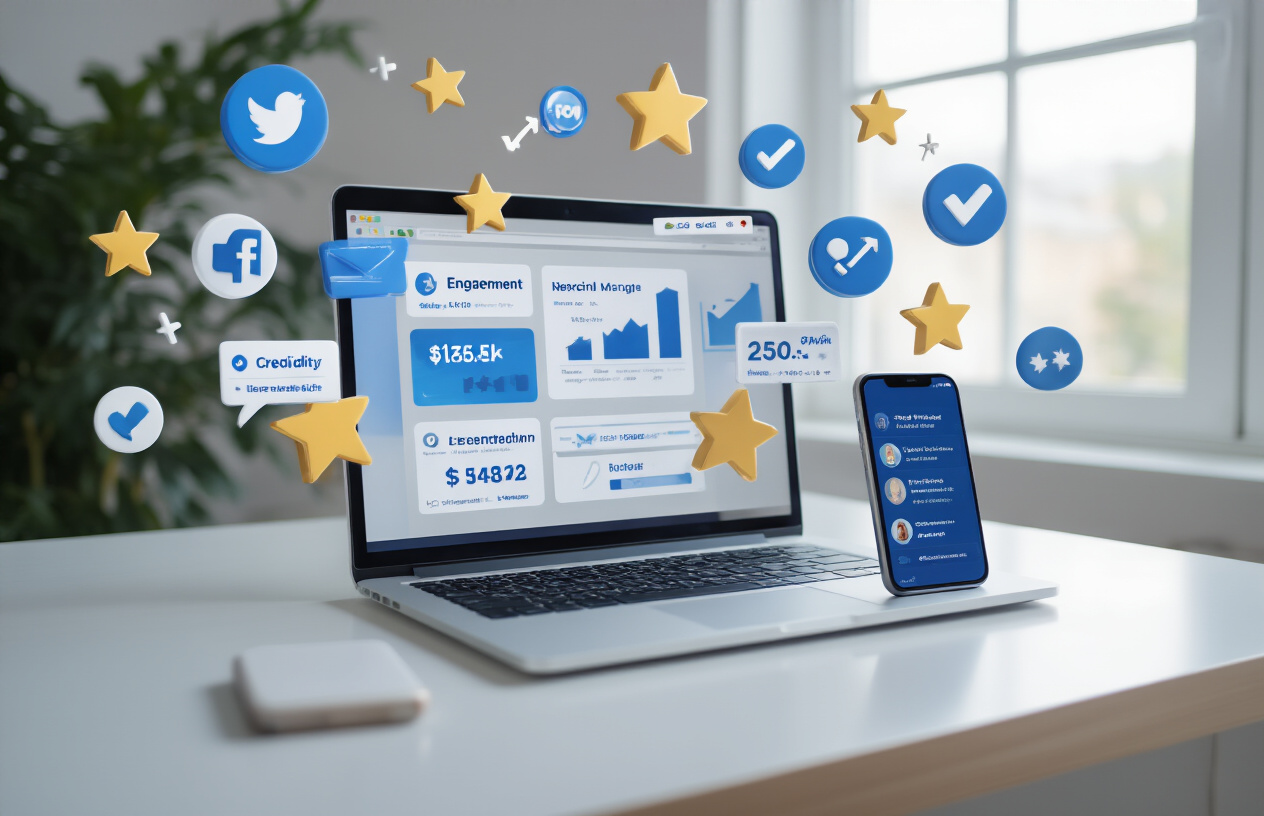
Optimizing Social Profiles for Maximum SEO Impact
Your social media profiles serve as powerful ranking signals that search engines can’t ignore. Complete optimization starts with consistent NAP (Name, Address, Phone) information across all platforms. This consistency tells search engines you’re a legitimate business worth trusting.
Link strategically from your social profiles to key website pages, not just your homepage. Create custom URLs for platforms that allow them – LinkedIn and Facebook offer this feature for business profiles. These branded URLs carry more weight than generic platform-generated links.
Bio sections are prime real estate for off-page SEO strategies. Include relevant keywords naturally while maintaining readability. Your bio should clearly communicate what you do and who you serve, making it easy for both users and search engines to understand your brand’s relevance.
Profile images and cover photos need optimization too. Use consistent branding across platforms and include alt text where possible. This visual consistency reinforces your brand identity and makes your profiles more discoverable through image searches.
Creating Shareable Content That Generates Natural Backlinks
Content that earns backlinks shares common characteristics: it solves problems, entertains, or provides unique insights. Original research, industry surveys, and comprehensive guides naturally attract links from other websites seeking credible sources.
Visual content performs exceptionally well for earning shares and links. Infographics, data visualizations, and behind-the-scenes videos encourage organic sharing. When others share your visual content, they often link back to the original source – your website.
Timing plays a crucial role in shareable content success. Post when your audience is most active, and consider trending topics that align with your expertise. Tools like industry reports, case studies, and expert roundups position you as a thought leader worth referencing.
Create content series that build anticipation and encourage return visits. Multi-part tutorials, weekly tips, and monthly industry insights keep audiences engaged while providing multiple opportunities for natural link acquisition.
Building Engaged Communities Around Your Brand
Community building goes beyond follower counts – engagement quality matters more than quantity. Respond promptly to comments, ask questions that spark discussion, and share user-generated content to foster genuine connections.
Facebook Groups and LinkedIn communities offer direct access to your target audience. Create or actively participate in groups where your ideal customers spend time. Share valuable insights without being overly promotional – this advanced SEO technique builds authority through consistent helpful presence.
Host live sessions, AMAs (Ask Me Anything), or virtual events to strengthen community bonds. These real-time interactions create memorable experiences that translate into loyal brand advocates who naturally mention and link to your content.
Cross-platform engagement amplifies your reach. When someone comments on your Instagram post, continue the conversation on Twitter or invite them to join your newsletter. This multi-touchpoint approach deepens relationships and increases the likelihood of organic mentions and backlinks across the web.
Brand Mentions and Citation Building for Enhanced Trust Signals
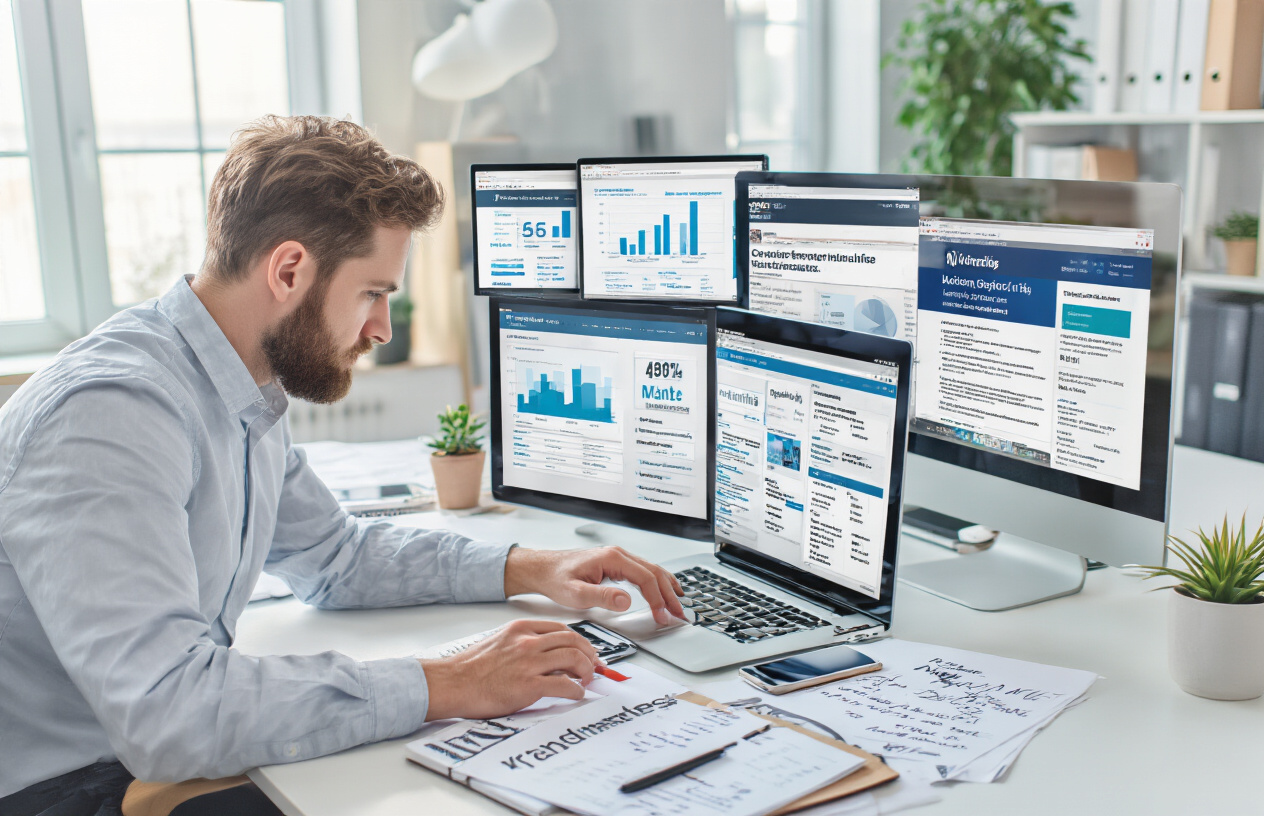
Monitoring and Managing Your Online Brand Reputation
Your brand’s reputation shapes how search engines view your website’s trustworthiness. Start by setting up Google Alerts for your brand name, key personnel, and product names. Tools like Mention, Brand24, or Hootsuite Insights can track conversations across social platforms, forums, and news sites in real-time.
When negative mentions surface, respond quickly and professionally. Address legitimate concerns publicly, then move detailed resolutions to private channels. This shows both users and search engines that you actively manage your online presence. Positive mentions deserve attention too – engage with users who praise your brand, as this encourages more organic advocacy.
Monitor review platforms beyond Google My Business. Check Yelp, Trustpilot, industry-specific review sites, and social media platforms where customers might leave feedback. Respond to reviews consistently, as this engagement signals to search engines that your business is active and customer-focused.
Securing Unlinked Brand Mentions Across the Web
Unlinked brand mentions represent missed opportunities for powerful backlinks. These mentions already demonstrate trust from publishers, making them ideal targets for link acquisition. Use tools like Ahrefs’ Content Explorer, Google Alerts, or Mention to find instances where websites mention your brand without linking to you.
Create a systematic outreach process for converting these mentions. Craft personalized emails thanking the author for the mention and politely requesting they add a link to provide readers with more information. Your success rate will be higher because the author already values your brand enough to mention it.
Track your unlinked mention conversion rate and note which types of content and publications are most receptive to adding links. News articles, industry reports, and blog posts often respond positively to these requests, especially when you provide additional value like updated statistics or expert quotes for future articles.
Building Local Citations for Geographic Authority
Local citations serve as powerful trust signals for businesses targeting specific geographic markets. Start with major data aggregators like Acxiom, Infogroup, Localeze, and Factual, as these feed information to hundreds of smaller directories automatically.
Ensure your NAP (Name, Address, Phone) information remains consistent across all citations. Even minor variations can confuse search engines and weaken your local authority. Create a master spreadsheet documenting your business information exactly as it should appear everywhere.
Target industry-specific directories alongside general business listings. A restaurant should appear on OpenTable and Zomato, while a law firm benefits from Martindale-Hubbell and Avvo listings. These niche citations carry more weight because they demonstrate relevance within your specific field.
Quality trumps quantity with local citations. Focus on authoritative directories with strong domain authority rather than pursuing every available listing. Monitor your citations regularly using tools like Moz Local or BrightLocal to catch inconsistencies or duplicate listings that could harm your local SEO performance.
Leveraging PR and Media Coverage for Quality Mentions
Media coverage generates some of the most valuable brand mentions for building website authority. Develop relationships with journalists and bloggers in your industry by providing valuable insights, data, or expert commentary on trending topics.
Create a media kit that includes high-quality photos, executive bios, company statistics, and recent news. This makes it easy for journalists to include your brand in their stories. Position your team members as thought leaders by contributing to industry discussions on social media and professional networks.
Time your PR efforts around industry events, product launches, or trending news topics where your expertise adds value. Journalists often need quick expert quotes, so being responsive and available can lead to quality mentions in high-authority publications.
Track your media mentions and measure their impact on your website’s authority metrics. Publications like Forbes, Inc., and industry trade magazines typically provide the strongest trust signals. Build on successful media relationships by offering exclusive insights or early access to company news for journalists who consistently cover your industry.
Technical Off-Page Optimization Techniques for Better Rankings

Schema Markup Implementation for Rich Snippets
Schema markup acts as a translator between your website and search engines, helping them understand your content better. When you implement structured data correctly, you’re giving search engines detailed information about your business, products, reviews, and events. This enhanced understanding often leads to rich snippets in search results – those eye-catching elements that show star ratings, pricing, availability, and other relevant details.
The most impactful schema types include Organization markup for brand information, Product markup for e-commerce sites, LocalBusiness for location-based services, and Review markup for customer testimonials. Google’s Rich Results Test tool lets you validate your implementation before going live. JSON-LD format is the preferred method since it keeps structured data separate from HTML, making maintenance easier.
Optimizing Page Loading Speed Across All Platforms
Page speed directly impacts your search rankings and user experience. Google’s algorithm considers loading times as a ranking factor, making speed optimization a critical component of advanced SEO techniques. Start by compressing images using WebP format, which reduces file sizes by up to 80% without quality loss.
Implement a Content Delivery Network (CDN) to serve your content from servers closest to your users. Browser caching reduces repeat loading times by storing frequently accessed files locally. Minify CSS, JavaScript, and HTML files to eliminate unnecessary characters and whitespace.
Consider these optimization priorities:
- Critical CSS: Load above-the-fold styles first
- Lazy loading: Load images and videos only when users scroll to them
- Database optimization: Clean up unnecessary plugins and optimize database queries
- HTTP/2: Enable this protocol for faster resource loading
Mobile-First Indexing Preparation Strategies
Google now crawls and indexes websites primarily through mobile versions, making mobile optimization essential for maintaining search visibility. Your mobile site needs to contain the same content, images, and structured data as your desktop version. Any content missing from mobile gets ignored during indexing.
Responsive design remains the gold standard, but if you use separate mobile URLs, ensure proper canonical tags and hreflang annotations. Mobile-friendly navigation should be thumb-friendly with adequate spacing between clickable elements. Pop-ups and interstitials can harm mobile experience, so use them sparingly and ensure they don’t block content access.
Test your mobile readiness using Google’s Mobile-Friendly Test tool and monitor Mobile Usability reports in Google Search Console for ongoing optimization opportunities.
Core Web Vitals Enhancement for User Experience
Core Web Vitals measure real-world user experience through three key metrics: Largest Contentful Paint (LCP), First Input Delay (FID), and Cumulative Layout Shift (CLS). These metrics directly influence search rankings and user satisfaction.
LCP measures loading performance and should occur within 2.5 seconds. Optimize by reducing server response times, eliminating render-blocking resources, and optimizing images. FID measures interactivity – aim for less than 100 milliseconds. Reduce JavaScript execution time and break up long tasks to improve FID scores.
CLS measures visual stability during page loading. Prevent layout shifts by:
- Setting explicit dimensions for images and videos
- Reserving space for ads and embedded content
- Loading new content below existing content rather than inserting it
Use PageSpeed Insights and Chrome DevTools to monitor these metrics continuously and identify optimization opportunities.
International SEO Setup for Global Reach
Expanding your website’s reach across different countries and languages requires strategic technical implementation. Hreflang tags tell search engines which language and country versions of your pages to show in search results. Implement these tags correctly to avoid duplicate content issues and ensure users see content in their preferred language.
Choose between subdirectories (/en/, /fr/), subdomains (en.site.com, fr.site.com), or separate domains (.com, .fr) for international versions. Each approach has advantages – subdirectories are easiest to manage, while country-specific domains can boost local authority.
Server location affects loading speeds for international users. Consider using CDNs or hosting content on servers in target countries. Currency, date formats, and contact information should be localized appropriately. Monitor international performance through Google Search Console’s country filtering to track your global SEO success.
Measuring and Tracking Your Off-Page SEO Success
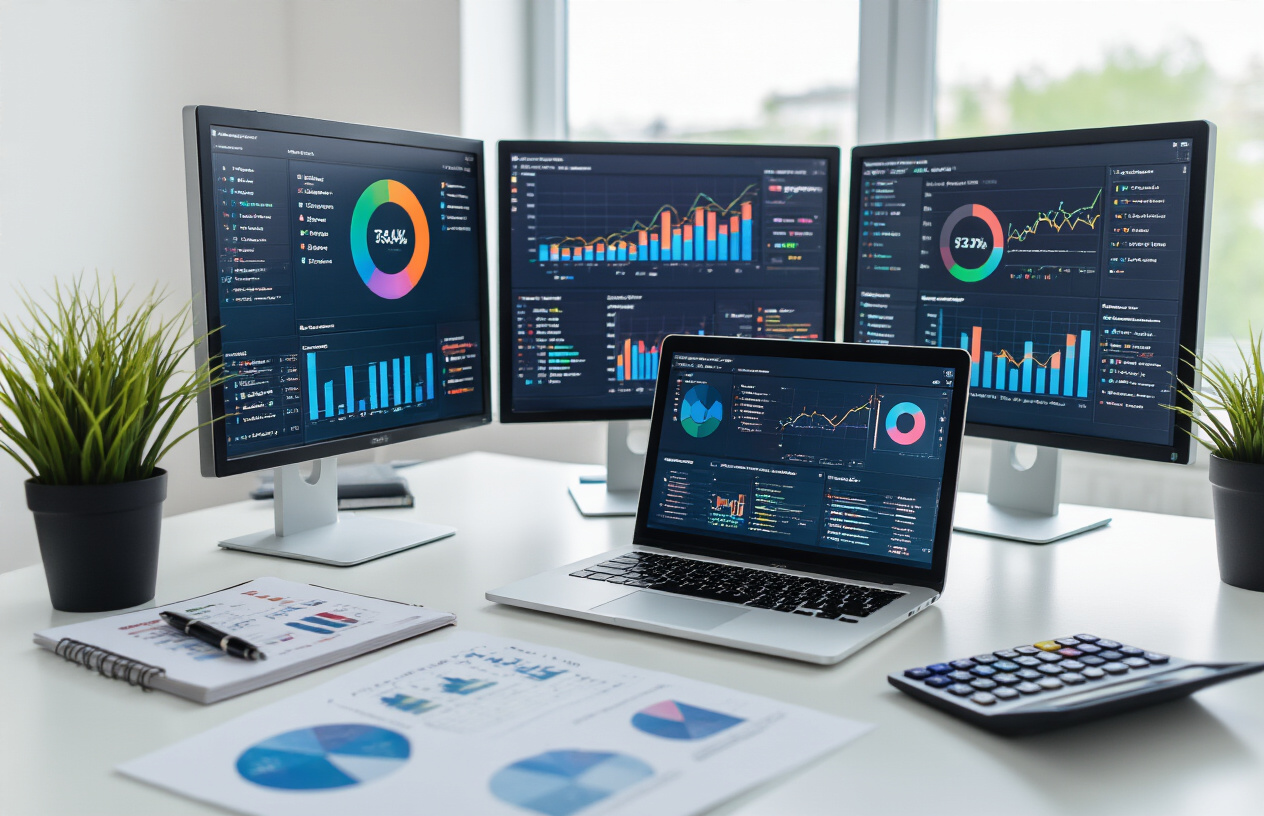
Essential Metrics That Indicate Growing Website Authority
Domain Authority (DA) and Page Authority (PA) serve as primary indicators of your website’s credibility in search engines. These scores, ranging from 1-100, reflect how likely your pages are to rank well. Track monthly changes in these metrics through tools like Moz or similar platforms.
Your referring domain count tells a powerful story about your off-page SEO success. Quality matters more than quantity – aim for steady growth from diverse, high-authority sources rather than massive spikes from low-quality sites. Monitor the ratio of new versus lost referring domains to gauge the health of your link profile.
Organic traffic growth directly correlates with improved website authority. Watch for increases in non-branded organic keywords, as this indicates search engines view your site as increasingly relevant for broader topics. Brand mention volume represents another crucial authority signal – track both linked and unlinked mentions across the web.
Social signals like shares, comments, and engagement rates contribute to your overall authority picture. While not direct ranking factors, they amplify your content’s reach and often lead to natural link acquisition.
Tools for Monitoring Backlink Quality and Growth
Ahrefs stands out as the gold standard for comprehensive backlink analysis. Its robust database updates frequently, providing detailed insights into your link profile’s health. The platform excels at identifying toxic links and tracking competitor backlink strategies.
SEMrush offers powerful backlink auditing features alongside competitive analysis tools. Its Backlink Gap feature reveals opportunities your competitors capture that you’re missing. The platform’s Brand Monitoring tool tracks mentions across the web, helping you convert unlinked mentions into valuable backlinks.
Google Search Console remains essential for monitoring your site’s performance from Google’s perspective. The Links report shows your most linked content and top linking domains, providing free insights directly from the search engine itself.
Majestic specializes in link intelligence, offering unique metrics like Trust Flow and Citation Flow. These proprietary scores help evaluate link quality beyond simple domain authority measurements. The platform’s backlink history feature reveals link-building patterns over time.
| Tool | Best Feature | Price Range | Ideal For |
|---|---|---|---|
| Ahrefs | Comprehensive link database | $99-$999/month | Enterprise-level analysis |
| SEMrush | Competitive gap analysis | $99-$449/month | All-around SEO suite |
| Majestic | Trust Flow metrics | $49-$399/month | Link quality assessment |
| Google Search Console | Free Google insights | Free | Basic monitoring |
Analyzing Competitor Off-Page Strategies for Competitive Advantage
Start by identifying your top 5-10 competitors in search results for your primary keywords. Use backlink analysis tools to export their complete link profiles, focusing on their highest-authority referring domains and most linked content pieces.
Study their content promotion patterns to uncover successful outreach strategies. Look for recurring themes in their linked content – do they consistently earn links through original research, industry surveys, or expert roundups? This intelligence helps shape your own content strategy.
Examine their guest posting footprint by filtering for authored content across different domains. Note which publications accept their contributions and the topics that perform best. This research creates your own target list for guest posting opportunities.
Monitor their brand mention patterns using tools like Brand24 or Mention. Track which publications cover them most frequently and what story angles generate the most coverage. This competitive intelligence reveals PR opportunities and industry relationships worth cultivating.
Analyze their social media engagement to understand which platforms drive the most traffic and backlinks. Look for patterns in their most shared content and note the influencers who regularly engage with their posts.
Create a competitive monitoring dashboard that tracks key metrics monthly:
- New referring domains gained
- Top new backlinks acquired
- Most shared content pieces
- Brand mention volume changes
- Social media growth rates
This systematic approach to competitor analysis reveals gaps in your current off-page SEO strategies and uncovers proven tactics worth adapting for your own website authority building efforts.

Your website’s authority doesn’t have to remain stagnant. The strategies we’ve covered—from advanced link building and social media amplification to brand mentions and technical optimizations—work together to create a powerful off-page SEO foundation. When you focus on earning quality backlinks, building genuine social signals, and establishing credible brand mentions across the web, search engines start to view your site as a trusted authority in your field.
The real game-changer comes from measuring your progress and adjusting your approach based on what the data tells you. Start implementing these techniques one at a time, track your results consistently, and watch as your website climbs higher in search rankings. Your competitors might be stuck using outdated tactics, but you now have the tools to leave them behind and dominate your niche online.
FAQs
What are cutting-edge off-page SEO insights?
Cutting-edge off-page SEO insights are advanced strategies and best practices that focus on building authority, high-quality backlinks, and external signals to boost search rankings.
How can I implement cutting-edge off-page SEO insights?
You can implement them by performing strategic link building, guest posting, influencer outreach, social media promotion, and analyzing competitor backlink profiles.
Why are cutting-edge off-page SEO insights important?
These insights help increase your website’s domain authority, drive targeted traffic, improve search rankings, and strengthen overall SEO performance.
Can beginners use cutting-edge off-page SEO insights effectively?
Yes. Beginners can start by focusing on key strategies like quality backlinks, guest posts, and social sharing before moving on to advanced off-page tactics.
Which tools help with cutting-edge off-page SEO insights?
Tools like Ahrefs, SEMrush, Moz, and Majestic can identify backlink opportunities, track link performance, and analyze competitor strategies effectively.
How do cutting-edge off-page SEO insights improve website traffic?
By building authoritative backlinks and optimizing external signals, these insights increase visibility in search engines, attracting more targeted visitors.
What is the difference between off-page SEO insights and on-page SEO?
Off-page SEO insights focus on external factors like backlinks and domain authority, while on-page SEO deals with optimizing content, meta tags, and internal links on your website.
How often should I update my cutting-edge off-page SEO insights?
It’s recommended to review and update your off-page strategies every 3–6 months to adapt to search engine algorithm changes and new backlink opportunities.
Are social media activities part of cutting-edge off-page SEO insights?
Yes. Social media promotion, sharing content, and influencer engagement can enhance your off-page SEO signals and drive referral traffic to your website.
Can cutting-edge off-page SEO insights work for small websites?
Absolutely. Even small websites can benefit by focusing on targeted, high-quality backlinks, niche influencer collaborations, and consistent off-page SEO efforts.


